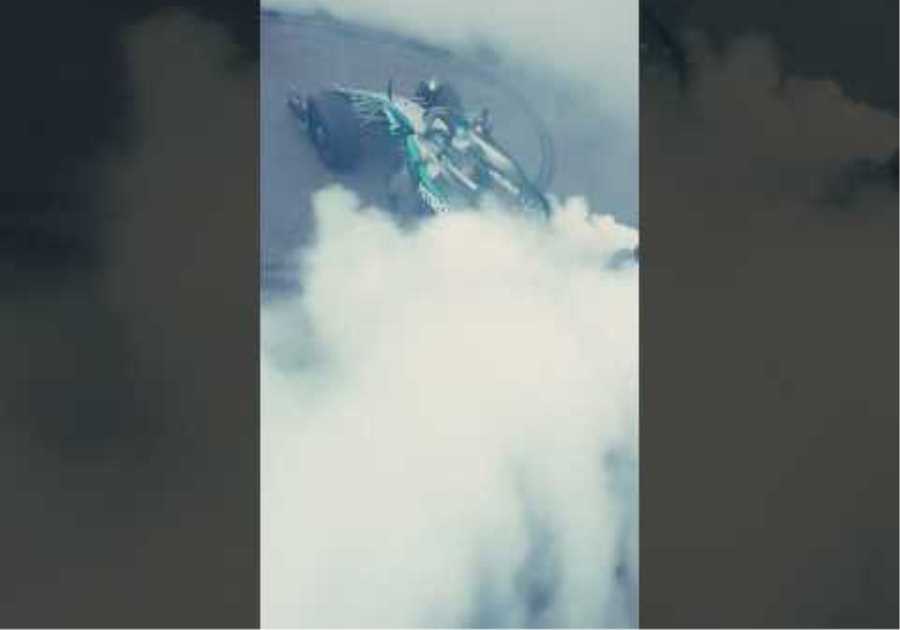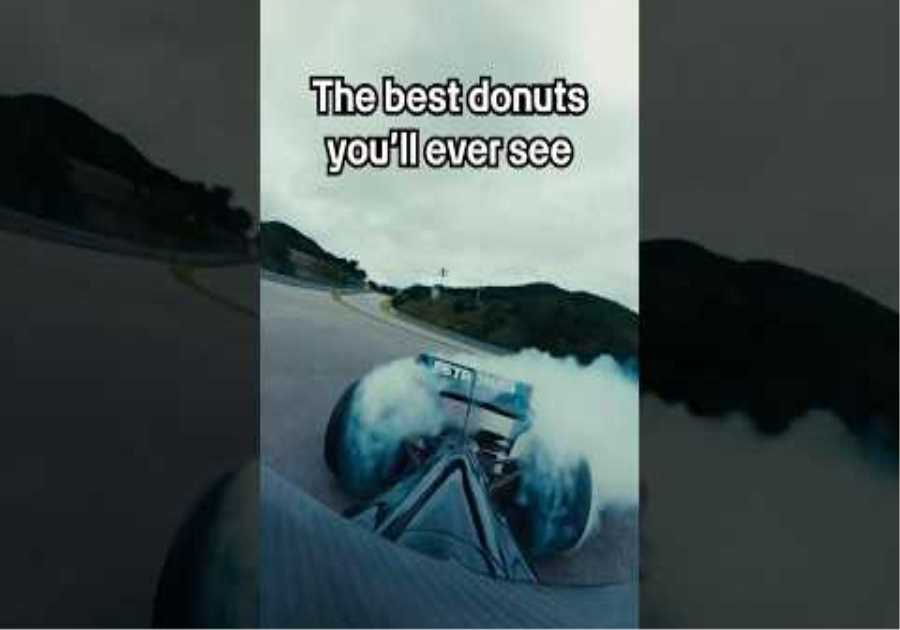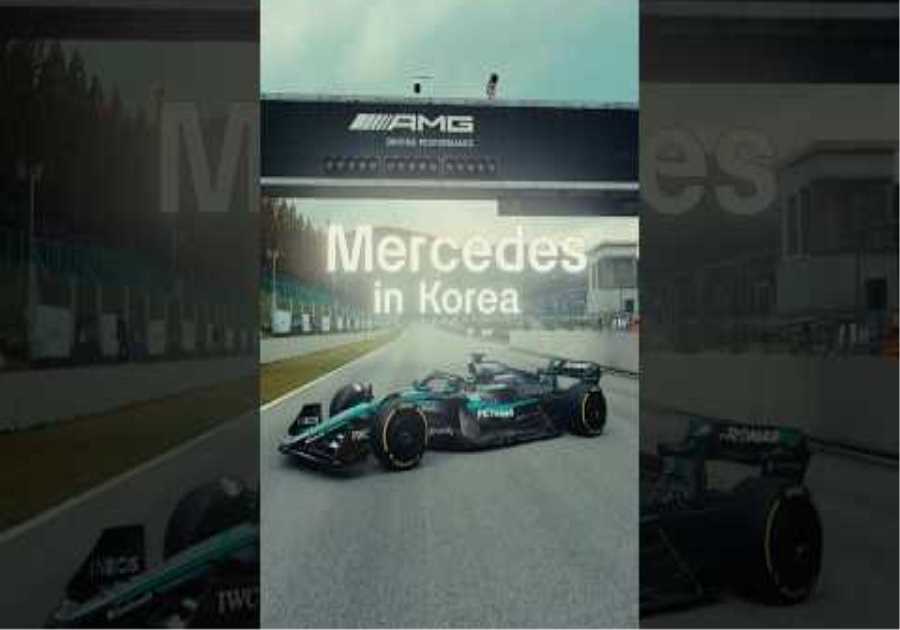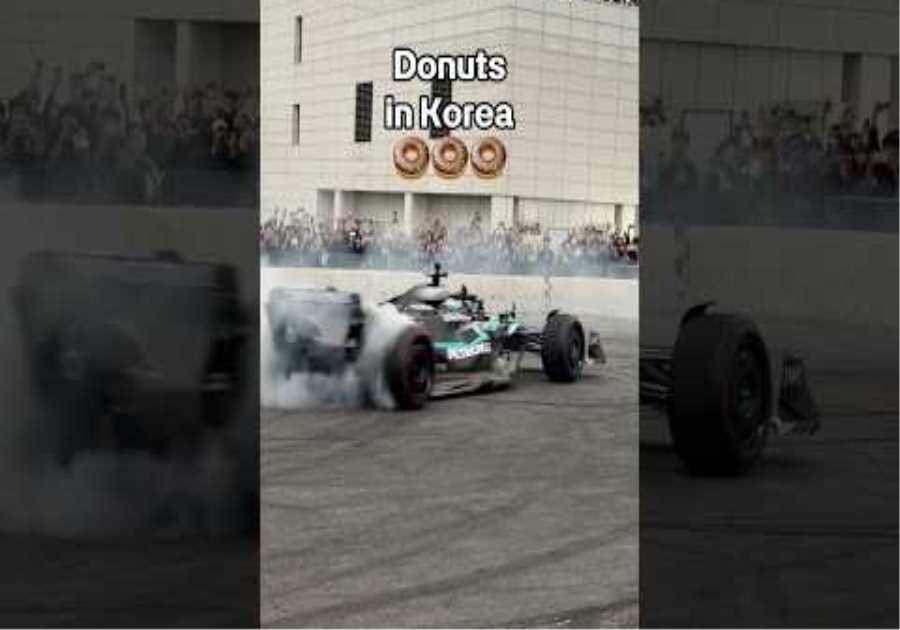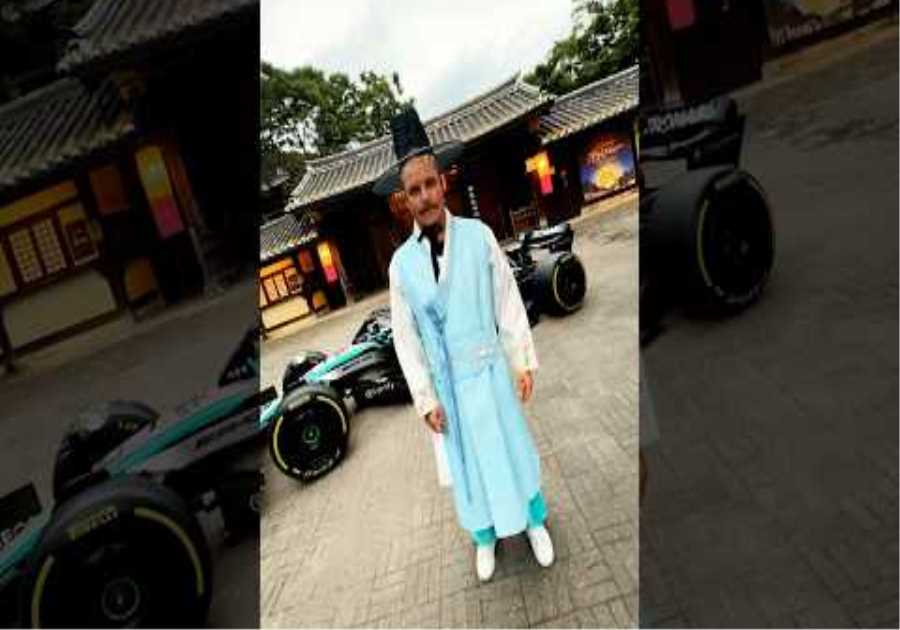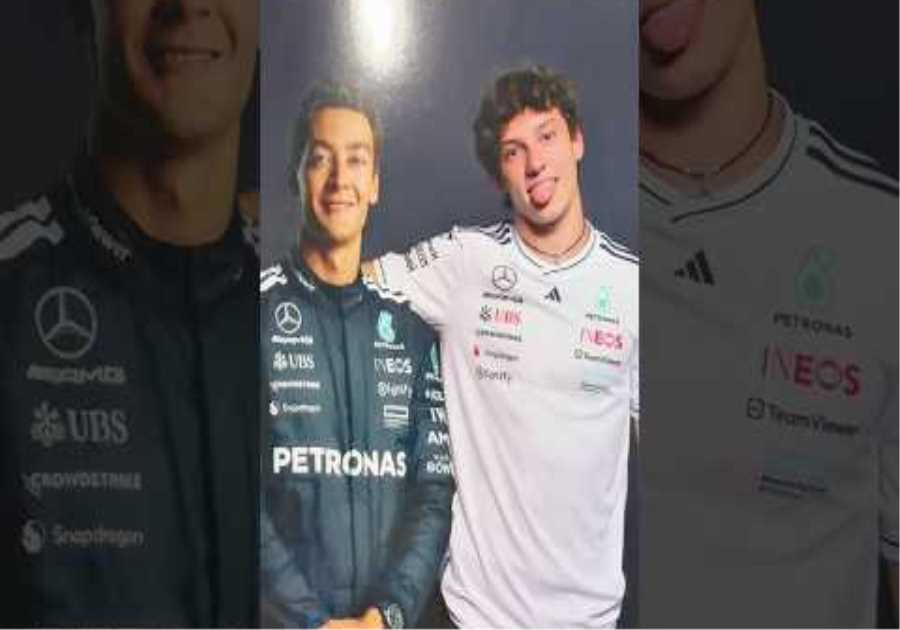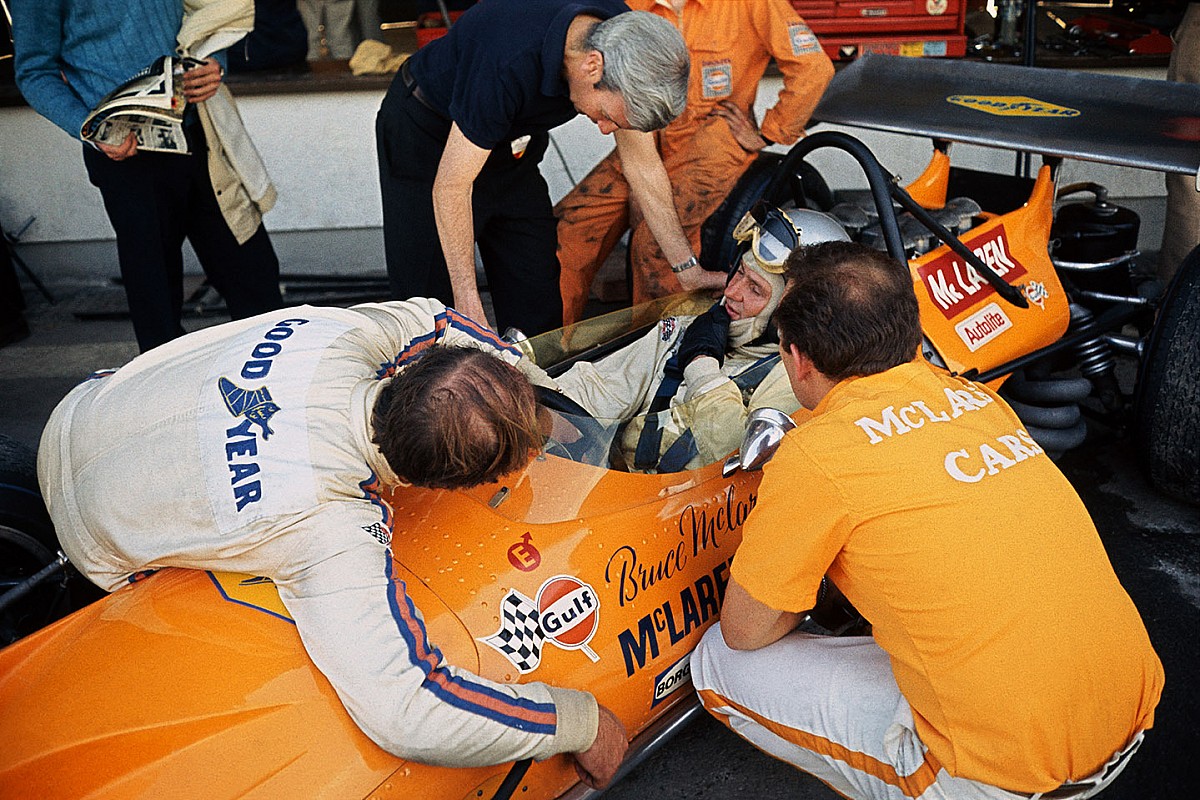
When the McLaren team travelled to its first ever F1 race in Monaco in 1966 the outfit compromised a Ford station wagon towing a trailer. On it sat an anonymous white racing car with a dark stripe running down its nose.
That debut weekend was to prove something of a disaster, largely due to the shortcomings of the Ford engine that Bruce McLaren had chosen rather than the any failings in the team or the car itself.
However, it was a start, and McLaren and his colleagues had something on which to build.
“I’ll tell you something,” he wrote in his Autosport column the following week. “Being a Formula 1 constructor isn’t easy (not that I kidded myself that it was going to be).
“I remember saying profoundly in this column a while back that motor racing tends to be a question of how much engineering you can do on how little money. Now I’d like to add a third rider – in how little time!”
McLaren was just 29 years old when he made the bold decision to become a constructor. However he was already vastly experienced in F1 terms.
After travelling from New Zealand to Europe in 1957 he had spent eight years with the Cooper team, initially as understudy to Jack Brabham. Over that time he won three grands prix, and recorded 17 other podium finishes. Latterly the team had seemed to lose its way, and during 1965 he managed only a third and three fifths in a season spoiled by retirements.
That season Bruce also took his first steps as a sportscar builder and entrant, and with Cooper on the wane, a graduation to F1 seemed like a logical step for 1966. By co-incidence the engine regulations were changing from 1.5-litres to 3-litres. There was sure to be a major shake-up, and it was a good time to get in.
“I think the idea developed during the ’65 season,” McLaren’s compatriot Chris Amon told me some 35 years later. “Bruce was having a pretty frustrating time at Cooper, and I think he saw that going nowhere. Equally, he’d seen what Jack Brabham had done, so I think that sowed the seeds of the idea.”
Bruce had already begun to gather a good crew around him. Administration and team management was taken care of by American Teddy Mayer. His brother Timmy had been killed in a McLaren-run Cooper in the 1964 Tasman series, but the tragedy only served to strengthen Teddy’s bond with Bruce.
There was a loyal group of mechanics, including Mayer’s friend Tyler Alexander and a bunch of hardworking and talented Kiwis. Amon, yet another young New Zealander, was a logical choice as second driver, having learned the F1 ropes with the Parnell team.
“Bruce was great to work with,” Chris recalled. “You never knew what he was going to come up with next day. He had flashes of inspiration, and having decided on something he never allowed anything to get in the way of getting it done.
“He generated tremendous enthusiasm within the whole operation. With some of his ideas Teddy and Tyler had to moderate his enthusiasm and try and do them within the resources of the company!
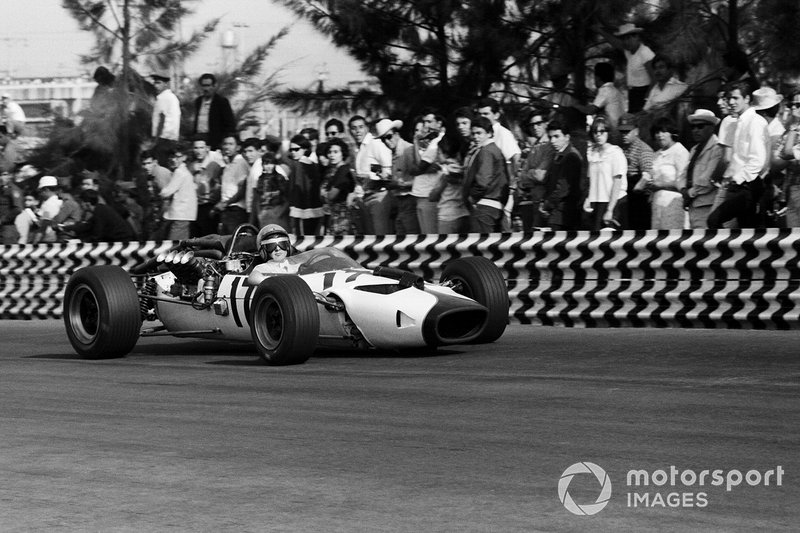
Bruce McLaren, McLaren
Photo by: David Phipps
“And on a personal basis Bruce was a wonderful guy – the sort of person who never had a bad word to say about anybody. Bruce was the sort of person who collected a good team around him. It was a very young crew, and there were some very good people around.”
Bruce wisely decided to bring in a trained engineer to design the car. The man he chose was budding aerospace engineer Robin Herd, who was involved with the Concorde project but harboured a desire to work in racing, and had plenty of enthusiasm to back up his ambition.
“I had a great job but I wanted something more challenging,” Herd recalled. “I got a message to phone Bruce. We met that evening, and that was that. McLaren were doing F1 and I was designing racing cars!
“I was only 24, and to be told we’ve got to have this car on the grid at Monaco next year when I hadn’t actually designed anything other than engineering exercises, showed an extraordinary degree of faith or stupidity on his part, and a similar arrogance or stupidity on mine. But I wanted to do it so much I wasn’t going to let anything stand in my way.”
A testing contract with Firestone proved a good starting point in terms of hard cash. The next big problem was to source a 3-litre engine, and even well-established teams were struggling to find one for the new formula.
Bruce was part of Ford’s massive Le Mans effort, and aware of the resources the company had, decided he might as well try his contacts at the blue oval. He acquired a stock of 4.2-litre Indy V8s and commissioned Californian company Traco to downsize them to the F1 legal limit. The general idea was to show Ford that it should be in grand prix racing, and potentially drum up future works support.
Meanwhile Herd pressed on with the first car, which was to be known as the M2A. It featured a highly unusual chassis made out of Mallite, an aluminium/balsa sandwich that was used in aircraft cabins.
The prototype was fitted with a 4.5-litre Oldsmobile V8 engine, and was used as a Firestone test hack, running for the first time in November 1965.
In hindsight a downsized version of the Olds was a much better starting point for an F1 engine – indeed the same unit would morph into the Repco used by Jack Brabham in 1966. By the time the definitive M2B was ready to run the Ford engine no longer seemed to be such a good idea.
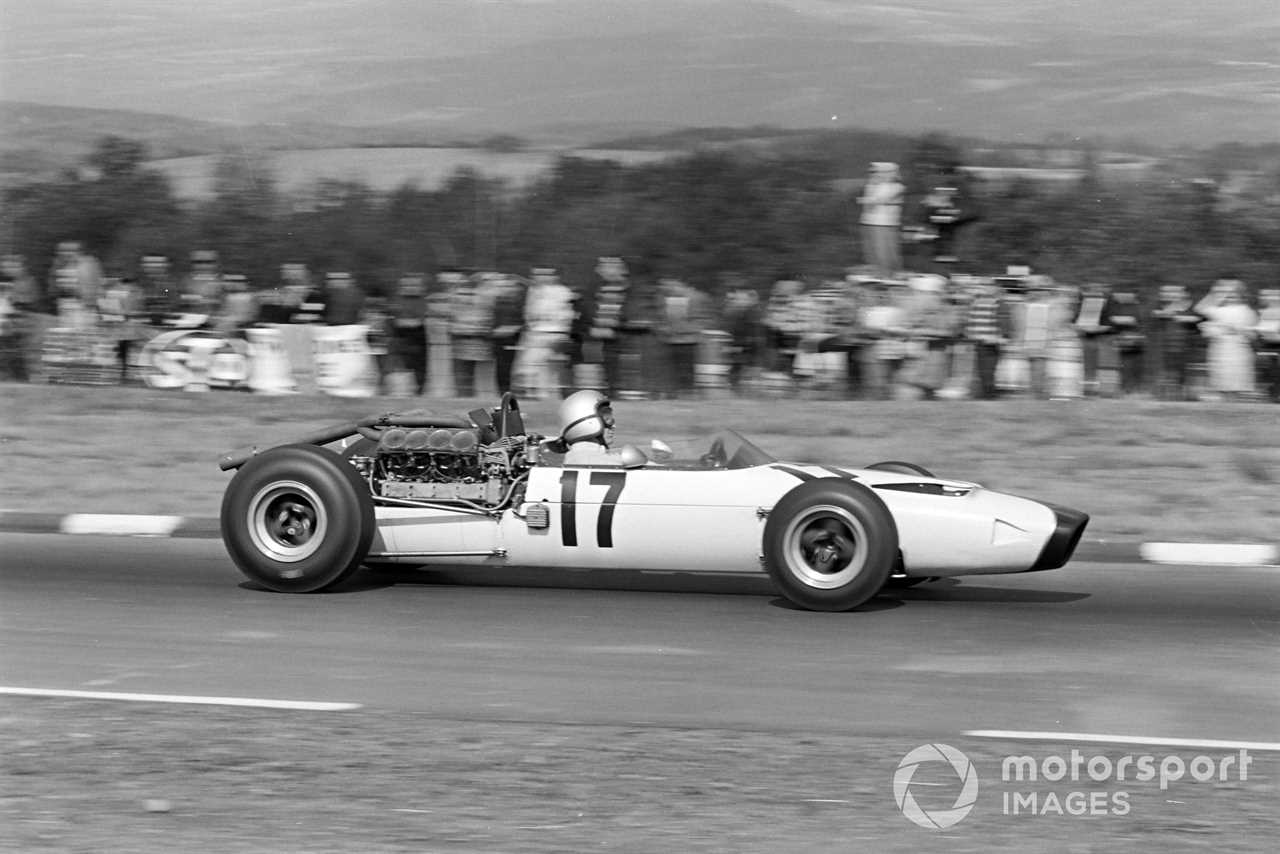
Bruce McLaren, McLaren M2B Ford
Photo by: LAT Images/Motorsport Images
“We were optimistic, but we kept hearing about setback after setback,” Herd recalled. “Eventually one engine arrived in England. We knew it was going to be fairly heavy, but the weight we were quoted bore no resemblance to what it actually weighed. It was like a 10-tonne truck! Nevertheless, we stuck it in the back of the car and went to Goodwood for half a day’s testing before Monaco.”
Alas, the shakedown was not a great success: “At least it ran. And it made a lovely noise. That’s probably where most of the power went. Bruce, who’d been there with the Oldsmobile car, came in and said, ‘This thing’s got no power, it’s a joke.”
The sheer scale of the Ford V8 was part of the problem, and it disguised any potential that the chassis might have.
“We worked out that the engine and gearbox together weighed about the same as the whole Brabham car,” says mechanic Howden Ganley. “It was a very good chassis, probably the stiffest monocoque of the time, but had nothing to propel it. We were going to run two cars, but it was enough of a scramble getting one together.”
That left the unfortunate Amon without a ride for the whole season.
“It was all very exciting at the beginning,” he recalled. “But it was equally very frustrating. We all thought the engine had tremendous potential, but of course it was a total disaster.”
The team had no transporter, so the precious car was loaded onto a trailer, which was attached to the back of a loaned American Ford Fairlane station wagon – a legacy of Bruce’s Le Mans contract. Herd and the mechanics climbed drove from team’s new workshop in Colnbrook to Lydd, from where they took a Silver City Airways Bristol Freighter to Le Touquet, prior to the long drive south. Bruce, his wife Patty and Teddy Mayer flew down to Nice later.
Once in the paddock, alongside Lotus, Ferrari, BRM, Brabham, Cooper and the rest, the new M2B attracted favourably comments. It was well-built, and thanks to hardworking Kiwi mechanic and noted perfectionist John Muller, it looked immaculate.
However that weekend the real F1 cars received less attention than the Hollywood “fakes” tended by John Frankenheimer’s film crew, who had virtually taken over the principality as they set to work on the making of Grand Prix. In fact McLaren had been recruited to double for the fictional Japanese Yamura team, in return for a useful injection of cash.
On the track, the M2B performed respectably, but mainly because everyone else was struggling to sort their new cars. Bruce didn’t help himself in qualifying by leaving his racing boots in the hotel. He had to saw the toes off his Hush Puppies!
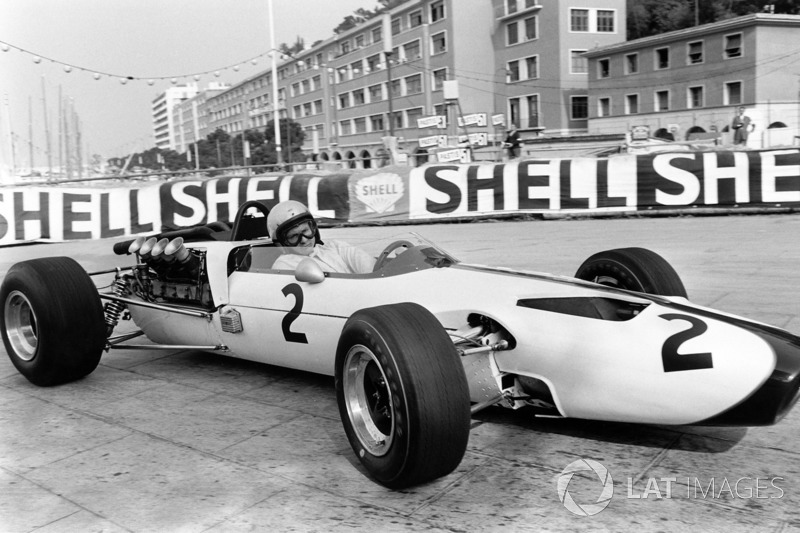
Bruce McLaren, McLaren M2B-Ford
Photo by: Motorsport Images
“We were actually the first car out in practice, and Bruce qualified 10th,” recalled Herd. “The car was so heavy, he couldn’t help but have phenomenal traction!”
He was nearly three seconds off Jim Clark’s pole, but six cars were behind him. The start and the first lap were captured by Frankenheimer’s cameras, and the movie showed Bruce shooting up to an initial sixth place. The heavy engine helped him to get what little power there was down onto the road…
However, the excitement didn’t last. After 10 laps an oil leak, caused by a loose line, sent him into the pits. The rules did not allow it to be topped up.
“An oil pipe union came loose up front in my car and squirted half the oil on the road and the other half over me in the cockpit,” Bruce wrote in Autosport. “Oil is uncomfortable enough on the road, but I can assure you it’s even worse in the cockpit – after it had been through the engine it was a little on the warm side too!”
“The oil went onto Bruce’s shoes,” Ganley recalls. “And he had a big moment when his foot slipped off the pedal. We got it hooked up again, but he was a long way behind. Bruce was worried about blowing the engine up, so he didn’t go out again.”
The following day there was an informal debrief on the terrace of Bruce’s hotel, where all the team members were invited to make suggestions.
“We were all given our opportunity to speak,” says Ganley. “And each suggestion was given due consideration. Even if one’s own ideas were not adopted, you knew that your voice was heard, and you were not ‘just’ another employee. As a way of building a team it was superb, and a lesson I took on in my own race car business [Tiga] in later years.”
The team was so disappointed with the Ford engine that it tried a much lighter Italian Serenissima V8 for Spa, Brands Hatch (where Bruce finished sixth) and Zandvoort, but it was hardly any better. The reworked Ford was given a second chance at Watkins Glen and Mexico City, earning a fifth place in the former.
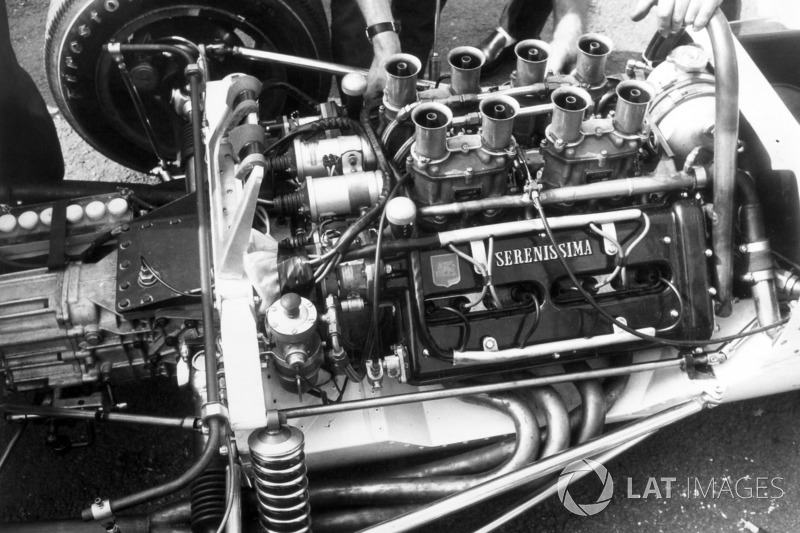
Bruce McLaren, McLaren M2B
Photo by: Motorsport Images
The patient Amon never did race a second car, and in F1 terms it proved to be a wasted year for the youngster. However, that year he and Bruce scored a historic win in the Le Mans 24 Hours for Ford.
McLaren began the 1967 season with a BRM V8 engine, and Bruce finished an encouraging fourth in Monaco, albeit some way behind after a pitstop. That year he also drove three races in Dan Gurney’s Eagle after Richie Ginther retired, although he didn’t finish any of them.
He returned to his own car later in the year, this time with a BRM V12, but again with limited success due to unreliability. He continued to be successful in sportscar racing, winning the Sebring 12 Hours with Mario Andretti and taking the CanAm title after victories in two out of the six rounds.
Bruce started 1968 well by winning the Teretonga Tasman race for BRM, and then things really came together for him in F1. The Cosworth DFV was by now freely available to paying customers, and the M7A package proved to be competitive. Spurred on by the presence of his old pal Denny Hulme in the sister car, Bruce won the Race of Champions in March and gave his team its first grand prix win in Belgium.
Later in the year he finished second in Canada and Mexico, while he also qualified second at Monza, where Hulme was victorious. Meanwhile having narrowly lost the world championship Denny took the CanAm title for McLaren.
The latest M7C proved to be very competitive in 1969. Bruce didn’t win a race, but he finished in the top five eight times, and earned third place in the world championship. He also won the CanAm title for a second time, with six race wins to his name. The other five were won by Hulme as the team utterly dominated the series.
By 1970 McLaren was well established – it was a winner in F1 and CanAm, and was expanding into Indycar racing. Bruce had even made a prototype road car. The future was bright, and it seemed that anything was possible under his leadership.
There were also suggestions that he might wind down his F1 involvement. However, armed with the new M14A finished an encouraging second – from 12th on the grid – at Jarama, before retiring in what turned out to be his final grand prix in Monaco.
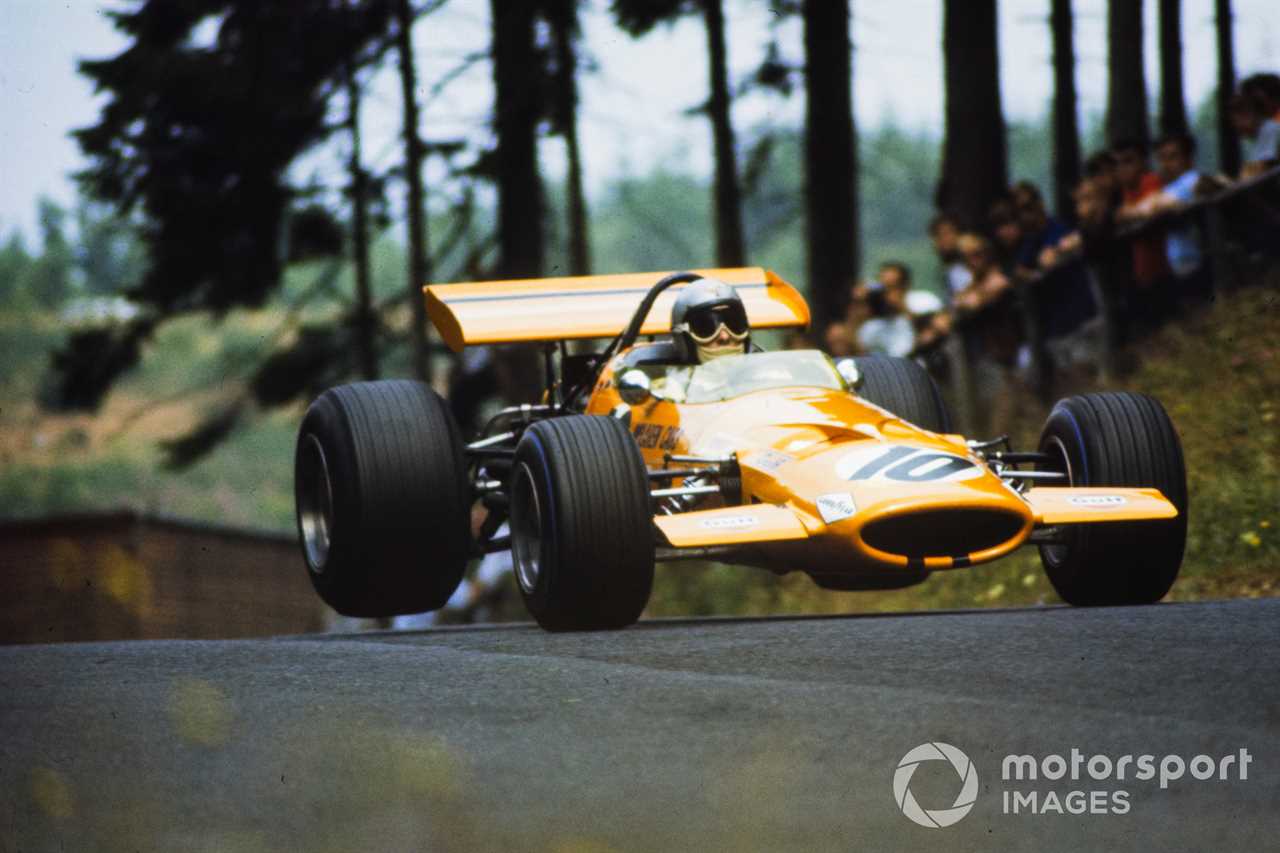
Bruce McLaren, McLaren M7C Ford.
Photo by: Rainer Schlegelmilch
On June 2nd he travelled to Goodwood for what should have been a routine test day. Initially he drove the F1 car, while mechanic and sometime racer Cary Taylor shook down the latest M8D CanAm chassis, which was due to be shipped to North America for the start of the season later that month. Bruce then swapped to the big sportscar, which had been nicknamed the “Batmobile.”
He undertook several short runs, making small adjustments in the pits each time before heading out again. Then shortly before the planned lunch break the mechanics heard the thump of a huge impact, followed by silence. The tail section had lifted at some 170mph and sent the orange car spiralling into an unyielding concrete flag marshals’ post.
Crew members jumped in a car and raced to the scene, but there was nothing anyone could do for Bruce – he was dead at the age of 32. His legacy, of course, was the team that he founded, and whose employees he had inspired to carry on and fulfil his vision.
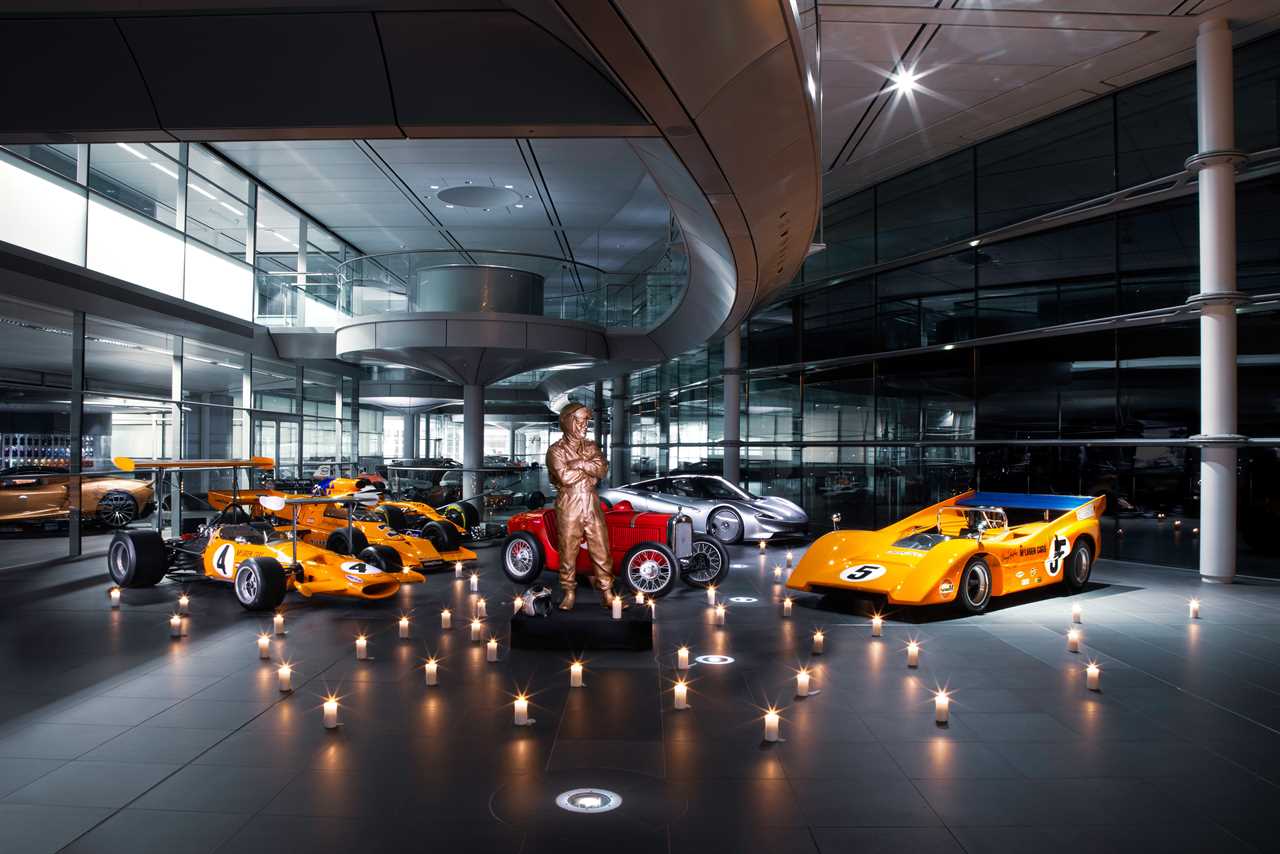
Bruce McLaren statue
Photo by: McLaren Media Centre
The post Remembering the legendary Bruce McLaren first appeared on monter-une-startup.
